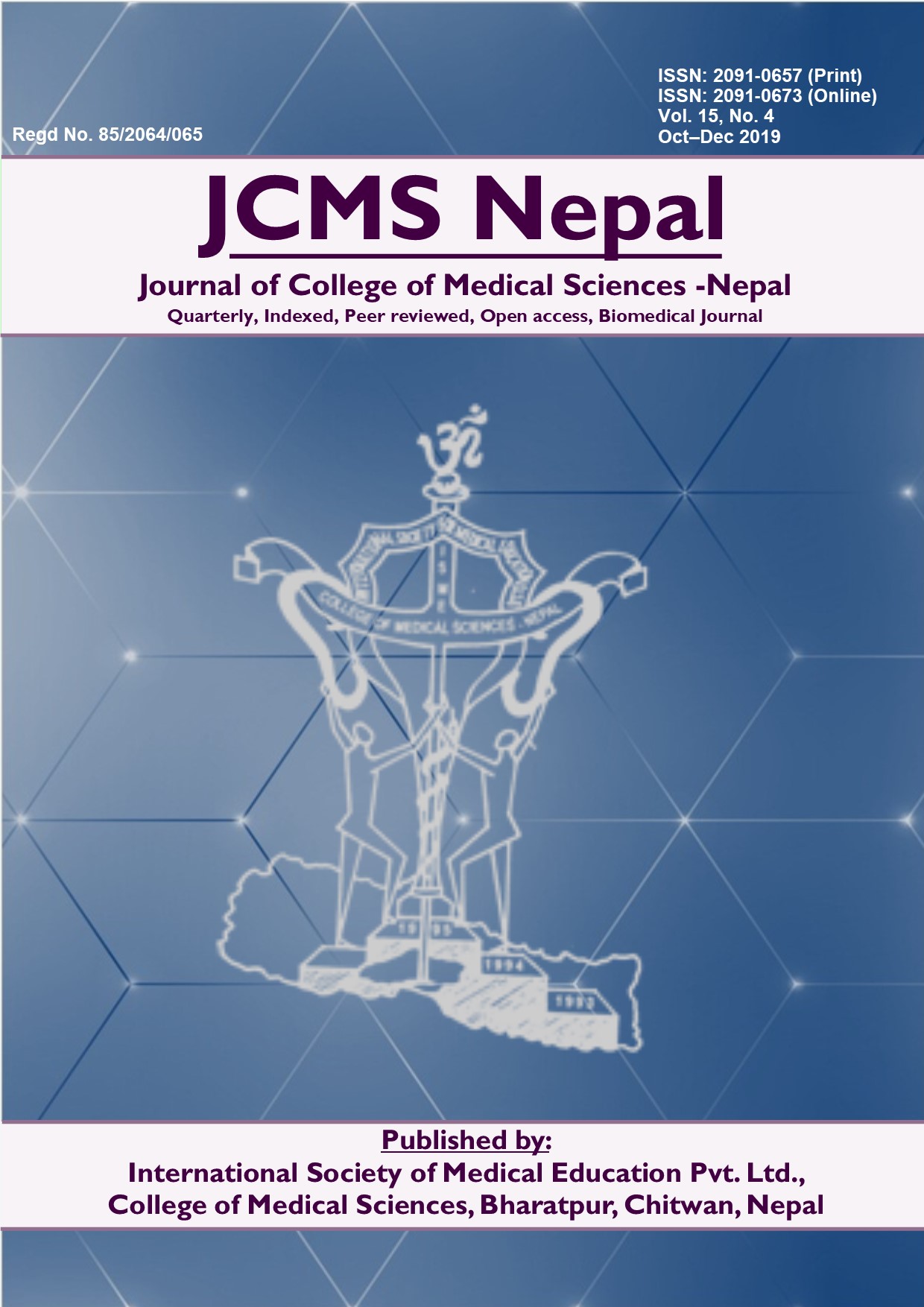Comparative Study of Fingerprint Patterns of Two Ethnic Groups: A Nigerian Study
DOI:
https://doi.org/10.3126/jcmsn.v15i4.24235Keywords:
Delta State, fingerprint, Itsekiri, Urhobo, WarriAbstract
Background: The uniqueness of fingerprints have made it possible for anthropologist to carry out studies on ethnic differences, heritability and linguistic relationships among individuals. The study aimed at investigating and comparing fingerprint patterns of the Itsekiri and Urhobo ethnic groups in Warri, South Southern Nigeria.
Methods: A total of 30 males and 30 females each from the Itsekiri and Urhobo tribe were investigated. Fingerprints of participants were obtained with a Hewlett placard G4010 fingerprint scanner. Chi-square and Mann Whitney U test were used to test for an association between non parametric variables, significance was accepted at P<0.05.
Results: Finding showed that the ulnar loop was the most predominant pattern in the studied population. Fingerprint patterns and total finger ridge count showed dimorphism among the Itsekiris’ as compared to the atd angle of the left fingers seen in the Urhobos’ (p = 0.021; 0.010; 0.038). Significant differences were observed in fingerprint patterns of the right and left thumb alongside the right middle finger among the respective tribes (P=0.047; 0.007; 0.024). Findings also showed a significant difference in TFRC and atd angle between the Itsekiris’ and Urhobos’ (P= 0.010; 0.002; 0.027).
Conclusions: The ulnar loop was dominant among the Itsekiri females and Urhobo males while the whorl and arch patterns were frequent in the Itsekiri males and the Urhobo females.
Downloads
Downloads
Published
How to Cite
Issue
Section
License
This license enables reusers to copy and distribute the material in any medium or format in unadapted form only, for noncommercial purposes only, and only so long as attribution is given to the creator.




